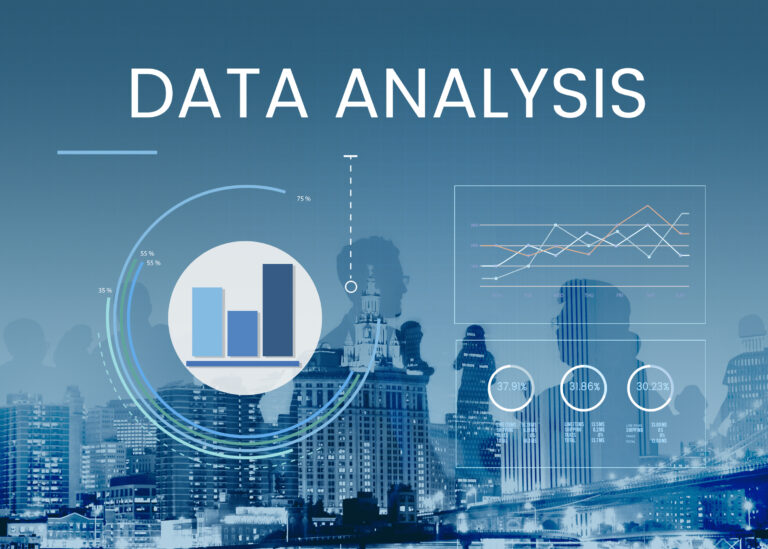In online retail, data analysis for e-commerce is a powerful tool that drives business growth and customer satisfaction. So, data analytics in E-commerce is unavoidable and practiced by many analysts as a profession. By leveraging ecommerce business analytics, companies can optimize operations, personalize customer experiences, and boost sales.
What is Data Analysis for E-commerce?
Data analysis for e-commerce involves collecting, organizing, and analyzing customer data to gain actionable insights. It tracks important metrics like website traffic, conversion rates, and customer lifetime value. So, by using data analytics in E-commerce, businesses can make data-driven decisions that enhance marketing strategies, product development, and customer service.
The process begins with data analysis for e-commerce collecting data from various sources such as websites, social media platforms, sales transactions, and customer service interactions. Statistical methods, machine learning, and data visualization are then applied to uncover trends and patterns.
How Does Data Analysis for E-commerce Work?
Data Collection
The first step in data analysis for e-commerce is gathering data from multiple channels including web traffic, customer behaviours, purchase histories, and social media interactions. So, comprehensive data collection forms the foundation for effective analysis.
Data Analysis
With e-commerce business analytics, companies use machine learning and statistical analysis to spot trends and patterns. that is how visual analytics tools help decision-makers understand complex datasets quickly and intuitively.
Actionable Insights
Ecommerce business analytics enables businesses to turn raw data into strategies for improvement. From optimizing product recommendations to refining ad campaigns, actionable insights can significantly boost performance.
Benefits of Data Analysis for E-commerce
Implementing eCommerce business analytics delivers a wide range of advantages that can transform online operations and drive sustained growth.
First and foremost, it leads to an improved customer experience. By understanding customer preferences through data, businesses can personalize the shopping journey—ultimately boosting satisfaction and fostering long-term loyalty.
Moreover, it supports optimized marketing strategies. eCommerce data analysis enables brands to identify and target high-intent customer segments more precisely. As a result, ad spend becomes more efficient and conversion rates improve significantly.
In addition, analytics help drive enhanced website performance. By examining user behavior and navigation patterns, businesses can streamline site architecture, reduce bounce rates, and improve overall user engagement.
Consequently, these improvements translate into increased sales and revenue. When marketing is more targeted, site performance is frictionless, and customer experiences are tailored, the result is a measurable boost in sales figures.
Furthermore, analytics promote better decision-making. By replacing guesswork with real-time, data-driven insights, organizations can make more strategic, timely, and profitable decisions.
Ultimately, integrating e-commerce analytics empowers businesses to stay ahead of the competition, innovate continuously, and scale effectively in a data-centric marketplace
Examples of Ecommerce Business Analytics in Action
Website Analytics
Tracking metrics like bounce rates, average session duration, and click-through rates gives insights into user engagement. So, data analysis for e-commerce identifies friction points in the customer journey and areas for site improvement.
Customer Segmentation
Through ecommerce data analysis, businesses can segment their customers based on behavior, demographics, and purchase history. Because of these, targeted campaigns and personalized recommendations become more effective as a result.
Conversion Rate Optimization
Analyzing drop-off points in the sales funnel helps optimize checkout processes and landing pages, boosting conversion rates. So, e-commerce business analytics ensures that every step of the customer journey is optimized for success.
Predictive Analytics
Using historical data to forecast sales trends enables smarter inventory management and dynamic pricing strategies. Ecommerce business analytics makes it easier to prepare for customer demand fluctuations.
Personalization
Data insights enable tailored product recommendations, dynamic website content, and personalized email marketing, leading to higher engagement and sales.
Tools and Techniques in Data Analysis for E-commerce
Several tools support data analysis for e-commerce, including:
Web Analytics Platforms: Tools like Google Analytics track visitor behavior and site performance.
Customer Data Platforms (CDPs): These aggregate customer data from different sources for unified profiles.
Business Intelligence Software: Tools like Tableau or Power BI visualize trends and patterns for decision-making.
Statistical Analysis: Applying techniques such as regression analysis to predict future trends.
Machine Learning: Identifying patterns and automating personalized recommendations.
6 Types of Data Analytics Used in E-commerce
Understanding different types of ecommerce business analytics can dramatically improve performance:
1. User Demographics
Ecommerce data analysis collects demographic data like age, location, and interests. This helps businesses tailor marketing strategies to different customer segments, optimizing reach and engagement.
2. Reach and Engagement Data
By tracking social media reach and engagement, businesses learn which content types perform best. For instance, video posts might generate more visibility than text posts, informing content strategy.
3. Referral Information
Ecommerce business analytics tracks how customers arrive at a website, whether via social media, email, or paid ads. This helps optimize marketing budgets by focusing on high-performing channels.
4. User Behavior
Analyzing how users navigate through a site, including time spent on pages and cart abandonment rates, provides insights to simplify and enhance the buying process.
5. Conversion Rates
Monitoring and improving conversion rates is vital for revenue growth. So, Data analysis for e-commerce can highlight bottlenecks in the sales funnel, suggesting targeted improvements.
6. Basket or Cart Analysis
Understanding which products are frequently purchased together enables the creation of bundled offers and personalized recommendations, enhancing upsell and cross-sell opportunities. So, Cart analysis is necessary.
Conclusion
In conclusion, the importance of data analysis for e-commerce cannot be overstated. By leveraging e-commerce business analytics and e-commerce data analysis, businesses can create more personalized experiences, optimize operations, and drive substantial revenue growth. With the continued advancement of tools and technologies, the future of data analytics in E-commerce looks promising, offering endless opportunities for innovation and success.
By embracing e-commerce business analytics today, online retailers can ensure they remain competitive, customer-centric, and primed for long-term growth in the digital marketplace.




